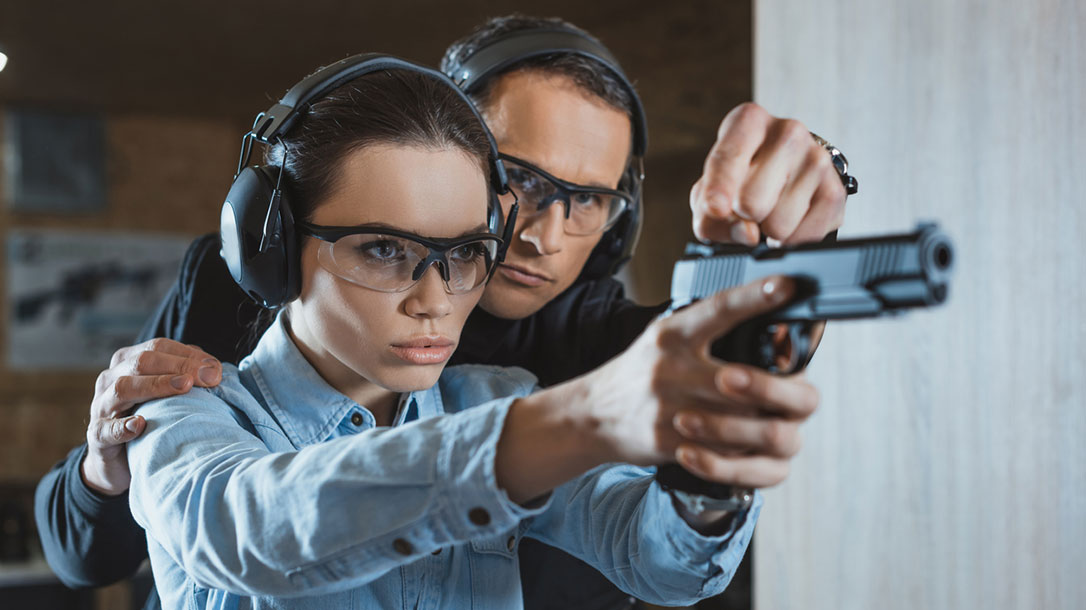As a new gun owner, it can be overwhelming to swim through an ocean of rules, traditions, and culture. Just know that we have all been there at one point or another. As you grow in your firearms journey, you will begin to understand all of these different rules and traditions. However, if you start with these 4 rules of firearm safety, you will be well on your way to safe shooting experiences.
The 4 Rules of Firearm Safety
Contrary to what some digital commandos may say, we all had to start at the beginning. One of the most important things to understand is the four firearms safety rules. You need to do more than just recite them because they exist to keep us free of unwanted holes in our bodies.
These are part of the firearms culture DNA. And pale-skinned keyboard gun experts sit waiting each day, scouring the internet for infractions. Their entire existence is based on finding people who break these rules. Then they go on a scorched-earth episode of finger-pointing as they clutch their pearls.
While technically they aren’t wrong, they are trolls who lack the social skills to simply message someone. With that rant out of the way, let’s get to the four rules and help you evade their wrath.
1. Keep your finger off the trigger until you are ready to shoot
This rule usually gets broken on a couple of occasions.
First is when people are drawing from their holsters trying to be John Wick. To shoot faster, they slip their finger on the trigger early. Unfortunately, the internet is full of videos of people shooting themselves in the leg with this technique.
The second place I see this is after a shot has been fired, and they lower their gun to look at the target. They are so consumed with their groups that they neglect to take their finger off the trigger.
Please wait until your gun is on target and you are intentionally ready to go to work. Or, once you finish shooting, move your finger off the trigger before you lower the gun. Keep it all the way out of the trigger guard and along the frame of the gun when not actively engaging a target.
2. Know your target, foreground, and background
In short, this means checking the area in front of your target and behind your target. We do not want one of our bullets to land in an unsuspecting person. While shooting on the range, everything is controlled. And yet, I have still seen people downrange while shooting is about to begin.
In the real world, we should plan on the worst-case scenario. If we must pull a gun in self-defense, we need to plan for many things going on around us. There might be a third-grade field trip with kids walking down the street. Likewise, there could be a bus of nuns slowly driving by on a tour. And there might even be a puppy giveaway on the corner.
You need to know where that bullet could potentially land if you press the trigger.
3. Do not muzzle anything you do not wish to destroy
More simply, don’t point your gun at anything you don’t want to shoot. Most commonly, I see people muzzle their hands, legs, and even their own head. Know where the gun is pointed at all times.
Another way to remember this is to not point a gun at anything that might get your butt kicked. In general, people do not like to be randomly muzzled. In fact, they take great offense to it. I have had to intervene in a couple of incidents during training where a fight was about to break out because of careless gun handling.
Don’t be that guy or gal. Control your muzzle at all times.
4. Treat every firearm as if it is loaded
This is pretty clear, and yet the rule is constantly broken. There always seems to be a gun expert who shoots himself, another person, or the wall because they broke this rule. Most commonly, we see it during cleaning.
They neglect to verify the gun is unloaded and pull the trigger. At that point, they show surprise and say, “The gun just went off.” No, you pulled the trigger, and it was loaded.
There is no such thing as an accidental discharge. There are only negligent discharges. Yes, I know some of you have comments about this, but I will refrain from going down that rabbit hole.
Final Thoughts
I will say that I have seen examples of additions to these rules. In fact, I visited a range that had a list of 28 “Must Know” safety rules. While they might apply to that range, these four basic rules will give you a good start anywhere.
The most important takeaway from these rules is that they are based on awareness and attention. A firearm is very unforgiving, and a safety mistake can have lethal consequences.

Didn’t find what you were looking for?
Read the full article here




